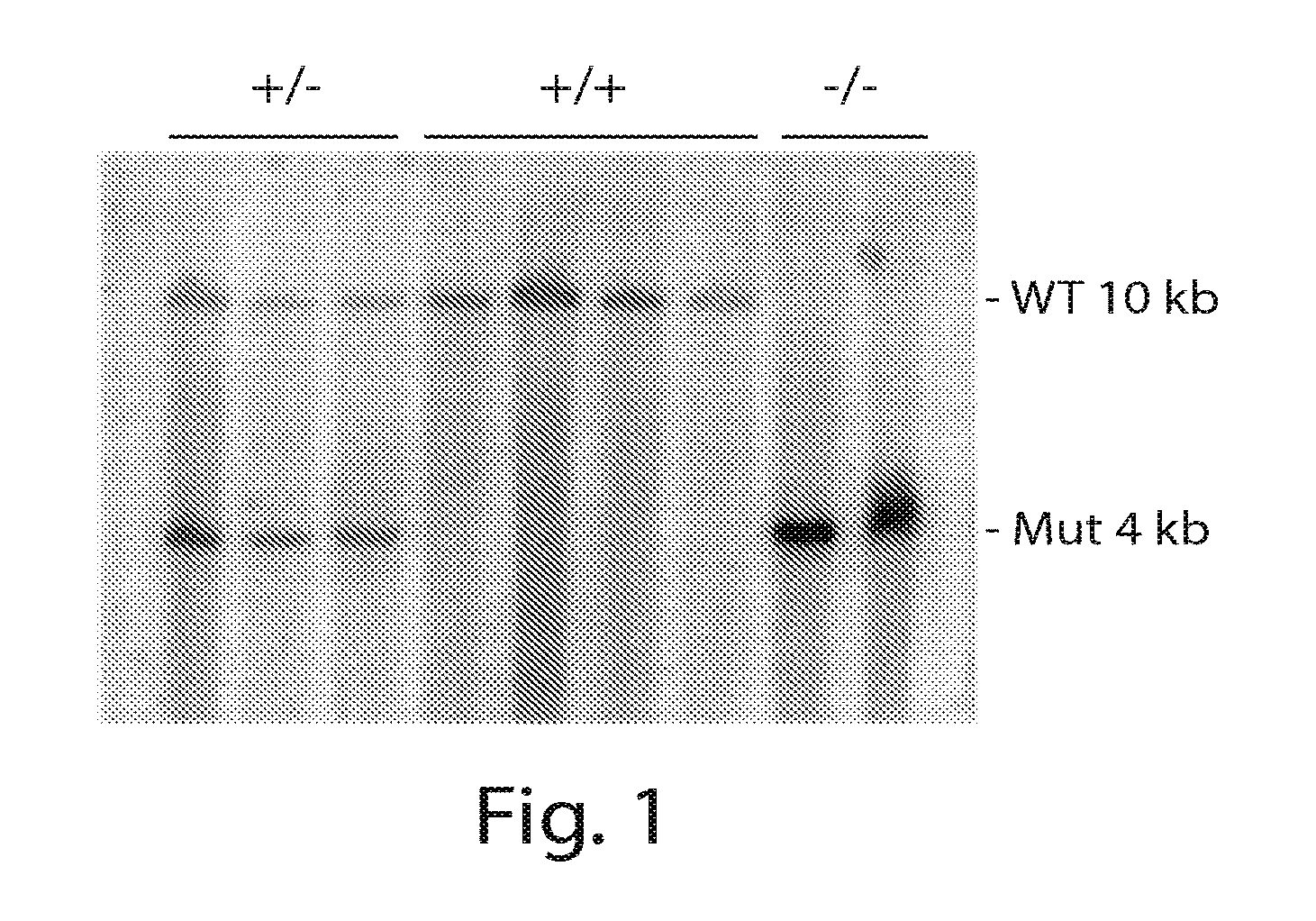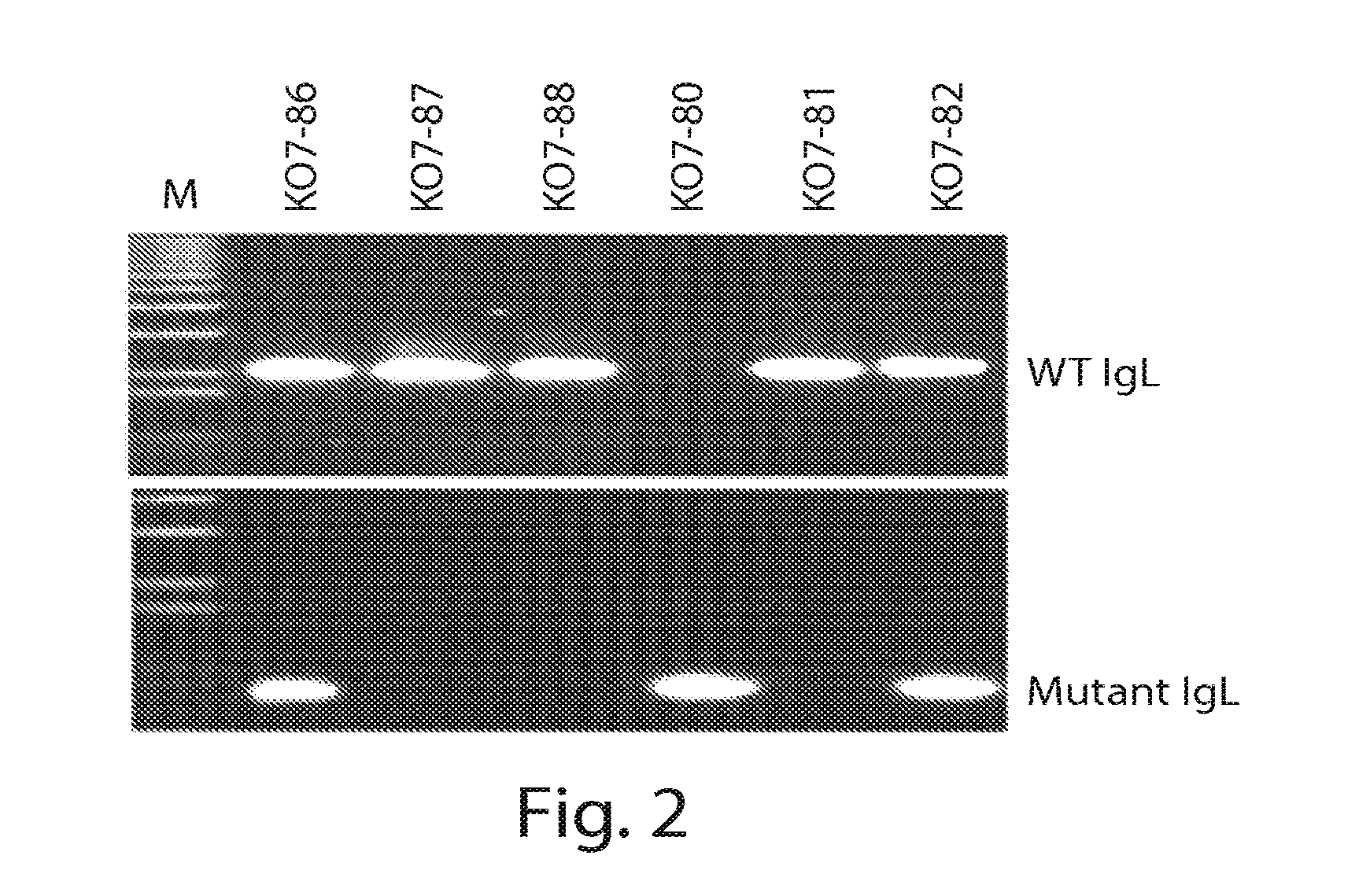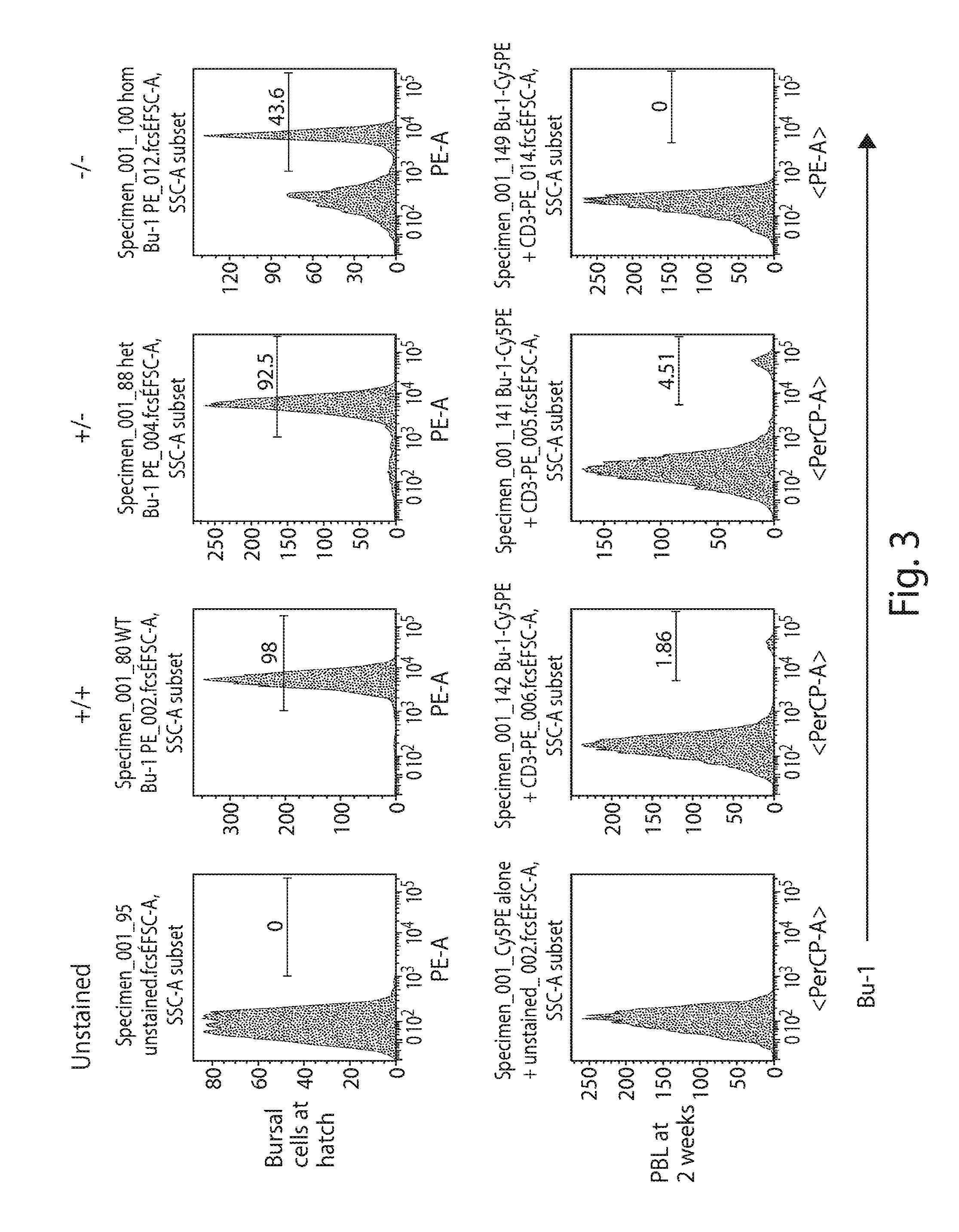Transgenic birds that produce chimeric human immunoglobulins
a technology of human immunoglobulin and transgenic birds, which is applied in the field of transgenic birds that produce chimeric human immunoglobulins, can solve the problems of inability to remove the fc portion of the antibody, small size, and inability to produce large quantities of antibodies
- Summary
- Abstract
- Description
- Claims
- Application Information
AI Technical Summary
Benefits of technology
Problems solved by technology
Method used
Image
Examples
example 1
Normal Birth, Development, and Sexual Maturity of Heterozygous IgL Knockout Chickens
[0132]Following artificial insemination of wild type Barred rock hens with semen of IgL knockout (KO-07) roosters, the fertilized eggs were allowed to grow to day 14. At day 14 the embryos were humanely sacrificed. Black feathered embryos were evaluated for genotype by Southern analysis. For genotyping, genomic DNA samples were prepared and digested with SacI restriction enzyme and fractionated on 0.7% agarose gels. Then DNA was transferred to nylon membrane and hybridized with a probe from the chicken IgL locus upstream from the regions. This probe is a 0.5 kb SacI-BstEII fragment this is external to the homology arms. It detects a wild type fragment of approximately 10 kb and a mutant fragment of approximately 4 kb. The probe detected that IgL knockout (IgL KO / +) was transmitted to 5 of the 7 embryos tested, as described in U.S. Patent Application Publication No. US 2010 / 0138946 (hereinafter, the “...
example 2
Breeding of IgL Knockout Chickens to Homozygosity
[0133]Sexually matured IgL KO / + roosters were mated to IgL KO / + hens by artificial insemination. Nine embryos were euthanized at day 3. For genotyping, genomic DNA samples were prepared and Southern analysis was performed using the same 0.5 kb SacI-BstEII fragment as a probe, as described in Example 1. The probe detected only a wild type fragment in 4 (IgL+ / +) of the 9 embryos and a mutant fragment in 2 embryos (IgLKO / KO). Both wild type and mutant fragments were detected in 3 embryos (IgLKO / +) (FIG. 1).
[0134]In separate experiments, embryos were incubated until hatched and genomic DNA was prepared from the combs of the chicks on the first day. PCR genotyping was performed using the same 2 sets of primers described in Example 1. In a set of 6 chicks genotyped, three samples produced only wild type IgL fragment of 2.1 kb and 1 produced only ERNI-neo fragment of about 750 bp while 2 produced both wild type and ERNI-neo fragments (FIG. 2...
example 3
IgL Mutant (KO / KO) Chickens Lack Peripheral B Cells
[0135]It is well established that a functional B cell receptor is necessary for the progression of B cell development. The bursa of Fabricius is productively colonized during embryonic life by a limited number of B cell precursors that have undergone the immunoglobulin gene rearrangements required for expression of cell surface immunoglobulin. Then, developing B cells undergo BCR-dependent rapid proliferation. Because a light chain is necessary to form a functional B cell receptor, the status of B cell development would provide direct evidence as to whether the chicken IgL gene is functionally inactivated in the IgLKO / KO chickens.
[0136]To examine this, bursal cells were collected from the Bursa of Fabricius of chicks at hatch. Briefly, single bursal follicles from newly-born chicks were crushed with the plunger of a 1-ml plastic syringe in round-bottomed wells of a microtitration plate, the cells were suspended in 400 ul of 10 mM Tr...
PUM
| Property | Measurement | Unit |
|---|---|---|
| concentration | aaaaa | aaaaa |
| diameter | aaaaa | aaaaa |
| nucleic acid | aaaaa | aaaaa |
Abstract
Description
Claims
Application Information
 Login to View More
Login to View More - R&D
- Intellectual Property
- Life Sciences
- Materials
- Tech Scout
- Unparalleled Data Quality
- Higher Quality Content
- 60% Fewer Hallucinations
Browse by: Latest US Patents, China's latest patents, Technical Efficacy Thesaurus, Application Domain, Technology Topic, Popular Technical Reports.
© 2025 PatSnap. All rights reserved.Legal|Privacy policy|Modern Slavery Act Transparency Statement|Sitemap|About US| Contact US: help@patsnap.com



